
The Benefits of Green Building for Austin Real Estate
For eco-friendly buyers and builders, green building practices are becoming increasingly important in the Austin real estate market. Green building offers numerous benefits, ranging from improved air quality, energy efficiency, and reduced environmental impact to lower operating costs and increased market value for properties. The implementation of green building practices in Austin real estate can create a healthier and more sustainable environment for everyone involved.
Green building is an approach to architecture and construction that focuses on creating a healthier and more sustainable built environment. It is characterized by the use of natural materials, renewable resources, and energy-efficient technologies. By taking advantage of these sustainable practices, Austin real estate can be built to be more energy efficient and contribute to a healthier environment for its residents.
The most popular green building practices for Austin real estate are the use of renewable energy sources, energy efficient materials, and water conservation technologies. Solar energy is one of the most popular sources of renewable energy used in green building practices. Solar energy can be used to reduce electricity bills and make homes more energy efficient. Additionally, using energy efficient insulation and windows reduces energy consumption and helps save money on heating and cooling costs. Lastly, water-conserving technologies such as low-flow faucets and water-harvesting systems can reduce water usage and help conserve resources.
Green building practices can also increase the market value of Austin real estate. Studies have shown that green building practices can increase the market value of properties by up to 20%. Green buildings also tend to attract more buyers, due to the cost savings and improved air quality that they offer.
Finally, green building practices in Austin real estate are beneficial to the environment. By using renewable energy sources, energy efficient materials, and water conservation technologies, Austin real estate can help reduce its carbon footprint and help preserve the environment.
Green building practices are becoming increasingly popular in Austin real estate, and the benefits they offer are undeniable. Eco-friendly buyers and builders alike can benefit from the energy savings, improved air quality, and increased market value that green building practices offer. By taking advantage of these sustainable practices, Austin real estate can become healthier and more sustainable for everyone involved.

Choosing the Right Green Building Materials
It is no secret that Austin, Texas is a city that is serious about its commitment to sustainability. As the population of Austin has grown and the demand for real estate in the area has increased, green building practices have become increasingly important. While building green is often considered a more expensive option, the long-term benefits to both the environment and the pocket book make it a wise choice for eco-friendly buyers and builders. One of the most important elements of green building is choosing the right materials.
The materials used in a construction project have a huge impact on the environmental footprint of the building. Materials such as eco-friendly lumber, recycled products, and sustainably harvested materials can help reduce the environmental impact of a construction project. There are a variety of green building materials available on the market, from recycled glass tiles to low-VOC paints and sealants. Choosing the right green building materials can help reduce the energy used in construction and the ongoing energy needs of a building.
In addition to choosing materials that are eco-friendly, builders and buyers should also look for materials that are durable and long-lasting. Durability and longevity are critical in green building, as they can help reduce the need for frequent repairs and replacements. While some green building materials, such as eco-friendly lumber, can be more expensive up front, the long-term savings can be significant.
When choosing green building materials, it is important to look for products that have been certified by a third-party organization. Third-party certification ensures that the materials have been tested for their environmental impact and have met certain standards for sustainability. Many green building materials are available from local suppliers, who can provide advice and information on the materials that are best suited for the project.
Finally, it is important to remember that green building is a process rather than a one-time decision. As the demand for green building materials increases, it is likely that more products will become available on the market. Staying informed and up to date on the latest green building materials and practices can help builders and buyers make more informed decisions when it comes to their construction projects.
Green building is becoming increasingly important in Austin, Texas, and choosing the right materials is a critical component of this eco-friendly process. From recycled glass tiles to low-VOC paints, there are a variety of green building materials on the market that can help reduce the environmental impact of a construction project. By looking for materials that are certified by a third-party organization, builders and buyers can ensure that their materials have been tested for sustainability and can help reduce the energy needs of a building. With the right materials, eco-friendly buyers and builders can enjoy the benefits of green building for years to come.
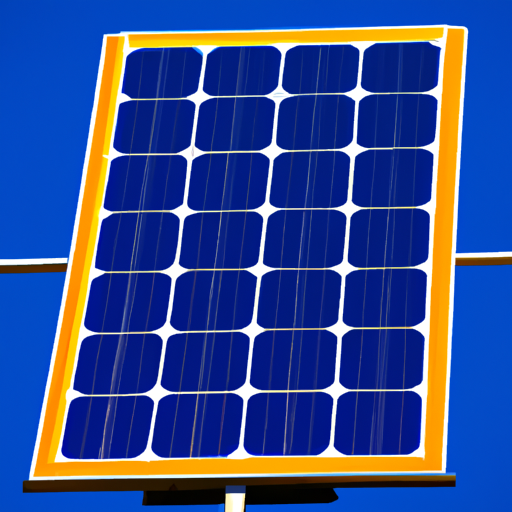
What is Green Building in Austin?
Green building in Austin is a term used to describe the practice of making homes and buildings more efficient, healthy, and eco-friendly. This is done through improved construction techniques and the use of sustainable materials and energy-saving technologies. Green building helps reduce the environmental impact of development on the planet, while providing homeowners, tenants, and business owners with a healthier, more efficient and cost-effective living or working space.
Austin is one of the most environmentally-minded cities in the United States and has taken steps to ensure that green building practices are commonplace in the area. The city has implemented an Energy Efficiency and Green Building Program that encourages builders to incorporate green building practices into their projects. This program provides incentives for builders who meet the standards set by the city, such as offering tax credits for projects that meet green building requirements.
The Austin Energy Green Building Program also offers certification for projects that meet the program’s standards. This certification is given to projects that are designed to reduce energy use and improve indoor air quality. The certification is also awarded to projects that use materials and products that are certified to meet the program’s standards. Austin Energy Green Building Certification is a great way for builders to demonstrate their commitment to green building practices and to show their clients the benefits of an eco-friendly home or building.
When it comes to green building in Austin, there are several practices that builders can incorporate to make their projects more efficient and eco-friendly. Some of the top green building practices in Austin include using energy efficient appliances and HVAC systems, using sustainable materials like bamboo and recycled materials, incorporating natural light and ventilation into the design, and using solar energy.
In addition to the green building practices mentioned above, Austin also has several programs and resources that can help builders create eco-friendly projects. The city has a Sustainable Building Program that provides builders with the resources and information needed to design green projects. The program also offers incentives for builders who design green projects, including rebates, discounts, and tax credits.
Austin also has a number of organizations and initiatives that are dedicated to green building. One of these initiatives is the Green Building Alliance, which works with builders, architects, and other stakeholders to promote green building practices in the city. The Green Building Alliance also provides resources and education to builders and homeowners, as well as hosting events and workshops to inform and inspire green building in the area.
Overall, green building in Austin is an important part of creating eco-friendly, energy efficient homes and buildings. The city provides a number of resources and incentives to encourage builders to incorporate green building practices into their projects. By taking advantage of these resources and incentives, builders can create projects that are both energy-efficient and environmentally-friendly, while providing homeowners, tenants, and business owners with a healthier, more efficient and cost-effective living or working space.

Reducing Energy Consumption in Austin Real Estate
Austin is at the forefront of green building practices, and if you’re looking to purchase or build a home that’s eco-friendly and energy efficient, you’re in the right place. Reducing energy consumption is an important part of sustainable living, and Austin real estate offers many opportunities to do this. From energy efficient appliances to renewable energy sources, Austin is leading the way in green building practices.
For starters, you can look for appliances that are ENERGY STAR certified. This means they meet the highest standards of energy efficiency and performance, and can help reduce energy bills. Additionally, you can look for homes equipped with energy efficient lighting. LED and CFL bulbs use a fraction of the energy of traditional bulbs and last much longer, so they’ll save you money in the long run.
You can also look for homes that use renewable energy sources, such as solar panels or wind turbines. These are becoming increasingly popular in Austin and can help reduce your reliance on traditional energy sources. If you’re building a new home, you can also look into green building materials such as recycled steel, bamboo flooring, and insulated walls. All of these can help reduce energy consumption in your home.
Finally, you can look for homes that are built to higher efficiency standards. This means the home is designed to reduce energy consumption and efficiency, from the insulation to the HVAC system. You can also look for homes that have earned a certification from the Austin Energy Green Building program, which is a rigorous green building program administered by the city of Austin.
Reducing energy consumption in Austin real estate is an important part of living a sustainable lifestyle. Fortunately, Austin is full of green building practices that you can take advantage of. From energy efficient appliances to renewable energy sources, there are many ways to reduce energy consumption in Austin real estate. By following these tips, you can ensure you’re doing your part to make Austin a more eco-friendly city.
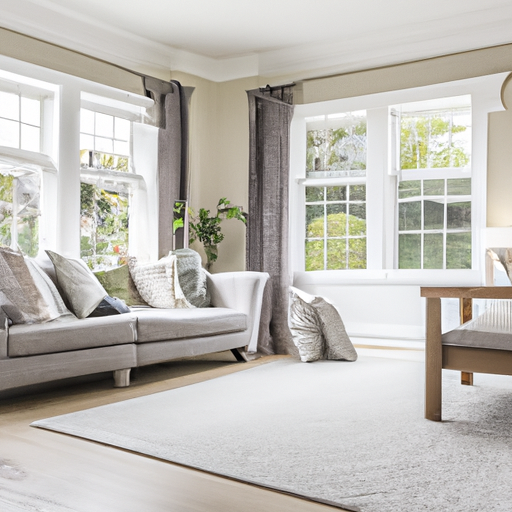
Incorporating Smart Technology into Austin Real Estate
When it comes to green building practices in Austin real estate, the use of smart technology is a surefire way to create an eco-friendly home. Smart technology allows homeowners to control various aspects of their home, such as temperature, lighting, and security, with the touch of a button. Utilizing this technology is an effective way to reduce energy consumption and improve overall energy efficiency.
Smart thermostats are one of the most popular pieces of smart technology in Austin real estate. They allow homeowners to easily set their thermostat to the desired temperature, and they will automatically adjust the temperature to keep the home comfortable while also saving energy. Smart thermostats can even be programmed to adjust the temperature at different times of the day in order to keep the home cool during the hottest hours and warm during the coldest hours.
Another great way to incorporate smart technology into Austin real estate is by using sensors. Motion sensors can be used to detect movement in the home and turn on lights and other appliances in response. This helps to reduce energy consumption, as lights and other electronics will only be used when needed. Smart plugs can also be installed to detect when an appliance is on and then turn it off after a certain amount of time. This helps ensure that appliances are not left on and wasting energy.
Smart technology is also a great way to improve home security in Austin real estate. Smart security systems allow homeowners to monitor their home remotely and be notified of any suspicious activity. Smart locks can also be installed to allow homeowners to lock and unlock their doors remotely, eliminating the need for traditional keys.
Finally, homeowners in Austin can benefit from the use of solar panels. Solar panels allow homeowners to generate their own electricity and reduce their reliance on the traditional grid. Solar panels can be installed on the roof or on the ground and can be used to power lighting, appliances, and other electronics.
Incorporating smart technology into Austin real estate is an effective way to create an eco-friendly home. Smart thermostats, sensors, security systems, and solar panels are all great ways to reduce energy consumption and improve home security. By using these technologies, homeowners can enjoy the convenience of modern technology while also doing their part to protect the environment.
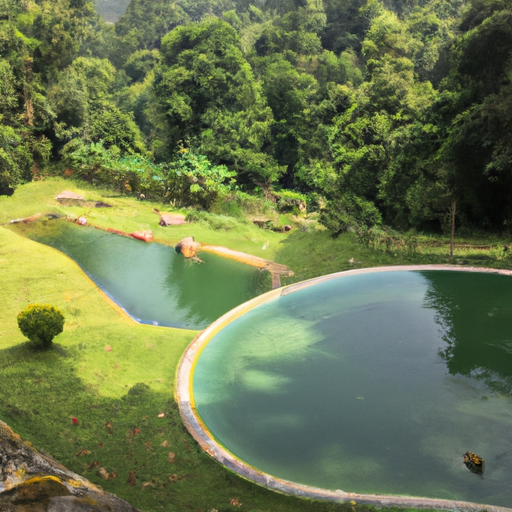
The Best Practices for Water Efficiency in Austin Real Estate
Water efficiency is a key component of sustainable architecture and green building practices, and this is especially true for Austin real estate. With a dry climate and growing population, optimizing water efficiency is the smart choice for buyers, builders, and property owners alike. There are a variety of ways to go about creating a water-efficient home in the Austin area, and understanding the best practices for water efficiency can help you create a more sustainable home.
One of the most important aspects of water efficiency in Austin real estate is the efficient use of irrigation. Installing efficient irrigation systems, such as drip irrigation and subsurface irrigation, can help reduce water usage and waste while still providing adequate water for your landscaping needs. Additionally, installing rainwater harvesting systems can be a great way to capture and reuse rainwater for irrigation and other uses, reducing your water usage even further.
Another important aspect of water efficiency in Austin real estate is the use of low-flow fixtures. Low-flow fixtures, such as low-flow toilets, showerheads, and faucets, can reduce the amount of water used for everyday tasks by as much as 40 percent. Replacing older fixtures with low-flow options is one of the simplest and most cost-effective ways to increase the water efficiency of your Austin home.
Finally, it’s important to consider the use of water-efficient appliances when building or remodeling a home in Austin. By installing Energy Star-rated appliances, you can drastically reduce the amount of water used for everyday tasks such as laundry and dishwashing. Additionally, installing water-efficient washing machines and dishwashers can help reduce water usage even further, allowing you to save both water and energy.
By following these simple tips, you can create a water-efficient Austin home that will not only be more sustainable, but also save you money in the long run. Investing in water-efficient fixtures and appliances, installing efficient irrigation systems, and harvesting rainwater can all help reduce water usage and create a more sustainable home. By following these best practices for water efficiency in Austin real estate, you’ll be able to create a more eco-friendly home that’s better for the environment and your wallet.
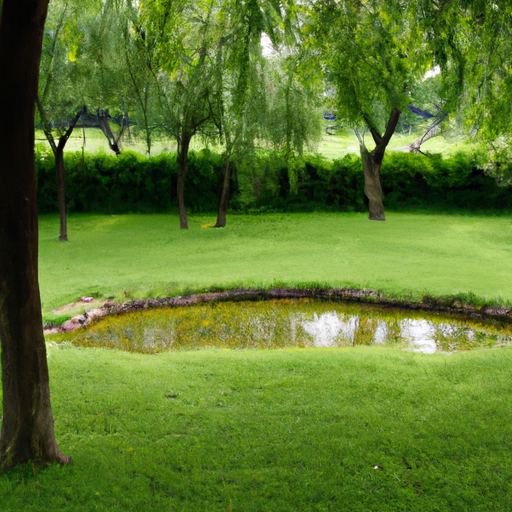
Eco-Friendly Landscaping Ideas for Austin Real Estate
Eco-friendly landscaping is an important part of green building practices for Austin real estate and an increasingly popular option for buyers and builders alike. With the right know-how, you can create an attractive and energy efficient outdoor space that adds value and appeal to your property. Whether you’re a homeowner looking to minimize your electricity bill or a builder seeking to maximize green features on a new development, there are plenty of eco-friendly landscaping ideas to consider.
For starters, consider using native plants and trees to reduce the need for additional irrigation and fertilizer. Native varieties are inherently adapted to the climate and require less maintenance than imported varieties. You can also look for drought-tolerant plants and keep them well-watered to reduce water usage. Additionally, consider planting trees or shrubs close to your home to provide shade and help reduce your home’s energy consumption.
When it comes to outdoor lighting, opt for LED, solar-powered, or other energy-efficient options. These fixtures are often equipped with motion sensors and timers, so they’re only on when they’re needed. To further reduce your energy consumption, use a timer to turn off lights late at night and/or when no one is home.
Installing permeable pavers or other porous surfaces around your property is another great way to reduce stormwater runoff and help prevent flooding. These surfaces allow water to pass through while also providing a durable, attractive surface for your outdoor space. Additionally, reducing the size of your lawn and incorporating rain gardens is a great way to reduce water consumption and improve the health of your landscape.
Finally, you can reduce your home’s carbon footprint by opting for green materials and products. Use recycled materials for paving and other hardscaping features, and look for certified organic fertilizers, pesticides, and herbicides. By making these simple changes, you can create a beautiful and sustainable outdoor space that’s good for the environment and your wallet.
Green building practices for Austin real estate are becoming increasingly important, and eco-friendly landscaping is a great way to reduce your home’s environmental impact. From selecting native plants and energy-efficient lighting to incorporating permeable pavers and green materials, there are plenty of creative and unique options to explore. By taking a few simple steps, you can create an attractive and energy efficient outdoor space that adds value and appeal to your property.
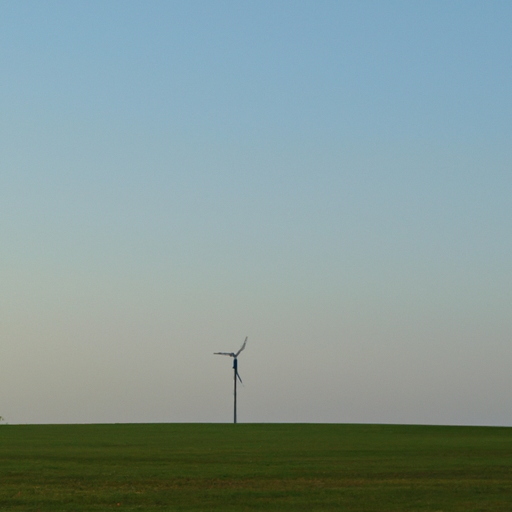
Creating Healthy Interiors in Austin Real Estate
Creating healthy interiors in Austin real estate should be at the top of the list for any eco-friendly buyer or builder. Healthy interiors are those that provide the occupants with a safe, comfortable, and sustainable environment for living and working. With the rising demand for green building practices, Austin real estate is the perfect place to start.
When creating healthy interiors for Austin real estate, buyers and builders should focus on two main components: materials and air quality. When it comes to materials, opt for natural and sustainable options. For example, use low-VOC paints, carpets, and flooring that are free of harmful chemicals. Make sure to also use materials made from recycled content whenever possible.
When it comes to air quality, make sure the space is well ventilated and free of any pollutants. Ensure that the HVAC system is properly maintained and that the air filters are replaced regularly. Additionally, add plants to the home or office to help naturally clean the air.
It is also important to choose energy efficient appliances and lighting for Austin real estate. Look for Energy Star certified appliances and use LED lighting throughout the home. This will help reduce energy consumption and save money on utility bills.
In addition to making sure the home is healthy and energy efficient, buyers and builders should also focus on creating a sustainable landscape. This can be done by adding native plants and trees that are drought-tolerant and require minimal watering. This will help conserve water and also provide a beautiful outdoor space.
Finally, buyers and builders should also look for ways to reduce the home’s carbon footprint. This can be achieved by using solar panels or other renewable energy sources to power the home. Additionally, consider installing a water filtration system or a rainwater collection system to reduce the need for potable water.
Creating healthy interiors in Austin real estate is important for both buyers and builders. By focusing on materials, air quality, energy efficiency, and sustainability, buyers and builders can create a safe, comfortable, and eco-friendly environment for living and working. With the right green building practices, Austin real estate can be a model for sustainable living.

Managing Construction Waste in Austin Real Estate
Austin is an incredibly progressive and environmentally conscious city. As such, it is no surprise that there is a growing market for green building practices in real estate. One of the most important green building practices for Austin real estate is managing construction waste. Construction waste not only negatively affects the environment, but it can also add significant costs to the project. The key to managing construction waste in Austin real estate is to reduce, reuse, and recycle.
Reducing construction waste is the first step in managing construction waste in Austin real estate. Reducing construction waste can be achieved in various ways. For instance, builders can purchase materials in bulk, which reduces packaging and resulting waste. Additionally, utilizing materials that are made from recycled materials and are recyclable can also help reduce construction waste. When possible, builders should also opt for materials that have a long life span and are durable.
Reusing construction waste is an important green building practice for Austin real estate. Reusing construction waste is beneficial for both the environment and the project budget. Builders can reuse materials like wood, drywall, and steel for different projects. Additionally, materials like concrete can be recycled and repurposed for other uses. Reusing construction waste also reduces the need for new resources and materials, saving the project money and time.
Finally, recycling construction waste is a great green building practice for Austin real estate. Recycling construction waste helps to conserve resources while helping to reduce the amount of waste that ends up in landfills. Builders can utilize various recycling programs in Austin to recycle construction waste like plastic, aluminum, and concrete. Additionally, builders can also donate usable materials or items to local charities or organizations.
By utilizing these three practices, builders and buyers of Austin real estate can make their projects more eco-friendly and cost-effective. Reducing, reusing, and recycling construction waste is an important part of green building practices in Austin and should be taken into consideration when planning a project. Through these practices, builders and buyers can help protect the environment and save money in the long run.



